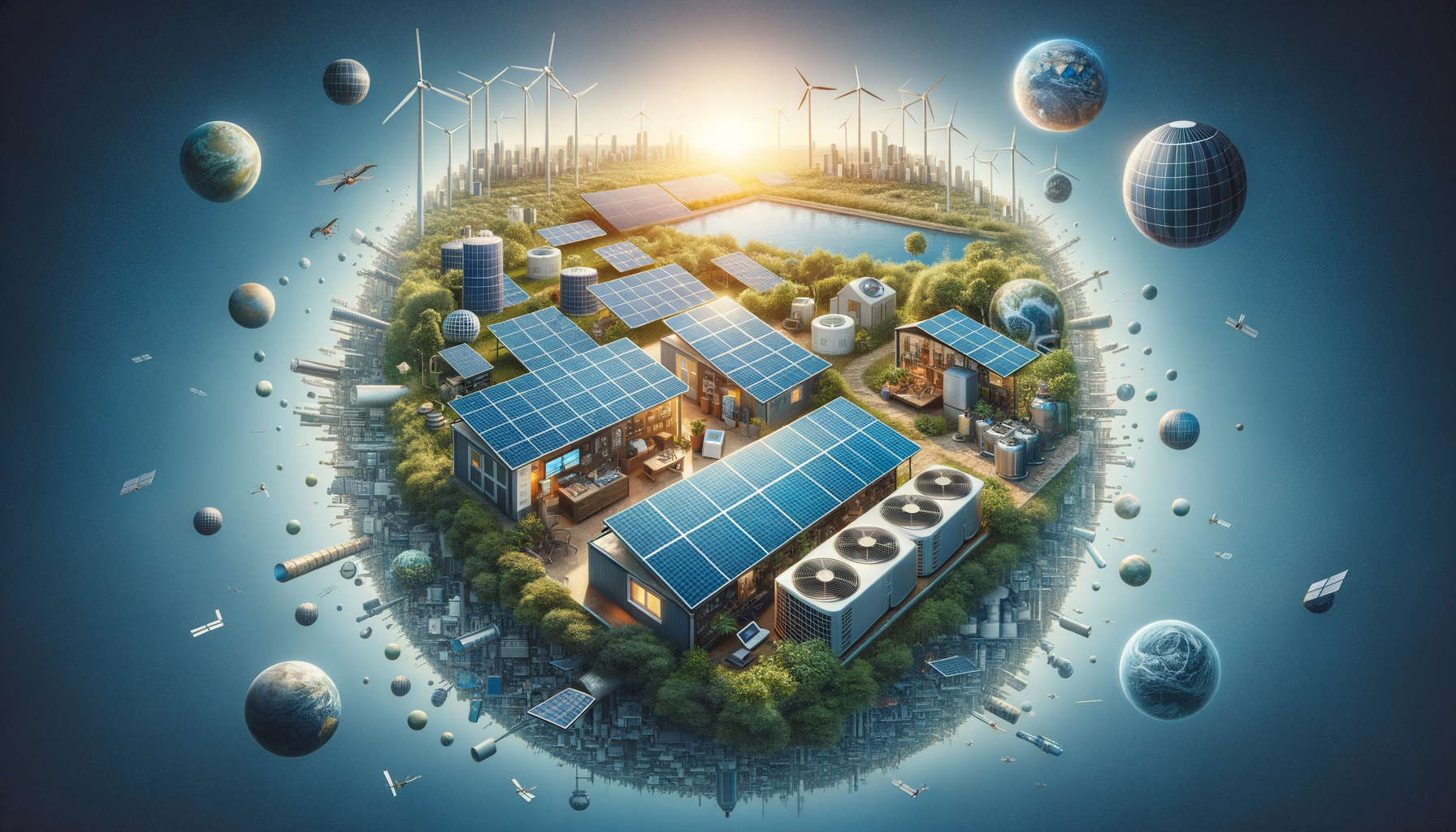Harnessing the Sun: The Future of Solar-Powered Cooling
Exploring the transformative potential of solar air conditioners and sustainable cooling solutions in an era of renewable energy.

Introduction to Solar Air Conditioners
As the world grapples with rising temperatures and the urgent need to reduce carbon emissions, solar air conditioners are emerging as a promising solution. These innovative systems harness the power of the sun to provide cooling, reducing reliance on conventional energy sources. Solar air conditioners are designed to operate efficiently even in areas with limited sunlight, making them a versatile option for various climates.
Solar air conditioners work by using photovoltaic panels to convert sunlight into electricity, which powers the cooling system. This not only reduces electricity bills but also minimizes the environmental impact associated with traditional air conditioning systems. As more people become aware of the benefits of solar energy, the demand for solar air conditioners is expected to rise significantly.
There are several types of solar air conditioners available, including hybrid systems that can switch between solar and grid power, and fully solar-powered units that rely solely on sunlight. Each type has its own advantages, catering to different needs and preferences. By understanding the different options and their benefits, consumers can make informed decisions about integrating solar air conditioning into their homes or businesses.
The Role of Solar Energy in Sustainable Cooling
Solar energy is at the forefront of the renewable energy revolution, offering a clean and abundant source of power. Its role in sustainable cooling is particularly significant, as it provides a way to reduce the carbon footprint of air conditioning systems. With the global demand for cooling expected to triple by 2050, finding sustainable solutions is crucial for environmental preservation.
One of the key advantages of solar energy is its ability to provide power without emitting greenhouse gases. This makes it an ideal choice for cooling systems, which are traditionally energy-intensive. By using solar energy, air conditioning systems can operate more efficiently, reducing both energy consumption and costs.
Moreover, solar energy can be harnessed in various forms, such as solar thermal and photovoltaic systems, to power different types of cooling technologies. This versatility allows for the development of innovative solutions that can be tailored to specific needs, further enhancing the sustainability of cooling systems.
Advantages of Solar-Powered Cooling Systems
Solar-powered cooling systems offer numerous advantages that make them an attractive option for both residential and commercial applications. One of the primary benefits is the reduction in energy costs. By utilizing solar energy, these systems can significantly lower electricity bills, providing long-term savings for users.
Additionally, solar-powered cooling systems contribute to environmental conservation by reducing reliance on fossil fuels. This helps to decrease greenhouse gas emissions, supporting global efforts to combat climate change. As a result, solar cooling systems are often seen as a key component of sustainable building practices.
Another advantage of solar-powered cooling systems is their potential for energy independence. By generating their own power, these systems can operate even during power outages, ensuring continuous cooling and comfort. This is particularly beneficial in areas prone to blackouts or where the power grid is unreliable.
Lastly, solar-powered cooling systems can enhance property value. As more consumers prioritize sustainability, homes and businesses equipped with solar technology are likely to attract higher market prices. This makes solar cooling systems a wise investment for the future.
Challenges and Considerations
While the benefits of solar air conditioners and sustainable cooling are clear, there are challenges and considerations that must be addressed. One of the main challenges is the initial cost of installation. Solar air conditioning systems can be more expensive upfront compared to traditional systems, which may deter some consumers. However, the long-term savings on energy bills often offset these initial costs.
Another consideration is the availability of sunlight. Solar air conditioners are most effective in regions with abundant sunlight, which may limit their efficiency in areas with frequent cloud cover or long winters. To overcome this, hybrid systems that combine solar and grid power can be used to ensure consistent performance.
Maintenance is also a factor to consider. Solar panels and air conditioning units require regular upkeep to maintain efficiency and prolong their lifespan. This includes cleaning the panels and checking the system for any potential issues.
Despite these challenges, advancements in technology and increased awareness of the benefits of solar energy are driving the adoption of solar cooling systems. By addressing these considerations, consumers can enjoy the advantages of sustainable cooling without compromising on performance or comfort.
Conclusion: Embracing Solar-Powered Cooling
In conclusion, solar air conditioners and sustainable cooling solutions represent a significant step forward in the quest for renewable energy and environmental conservation. By harnessing the power of the sun, these systems offer an eco-friendly alternative to traditional air conditioning, reducing both energy costs and carbon emissions.
As technology continues to advance, the efficiency and affordability of solar cooling systems are expected to improve, making them accessible to a wider audience. By embracing these innovations, individuals and businesses can contribute to a more sustainable future, ensuring comfort and energy efficiency without compromising the planet.
Ultimately, the transition to solar-powered cooling is not just a trend, but a necessary evolution in our approach to energy consumption. By making informed choices and investing in sustainable solutions, we can pave the way for a cleaner, greener future.